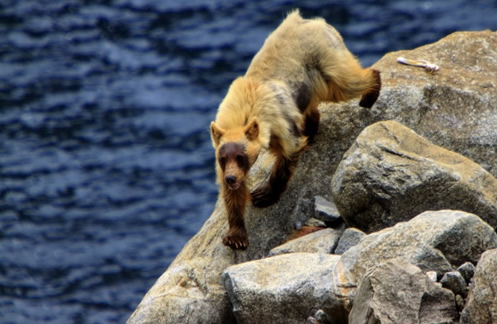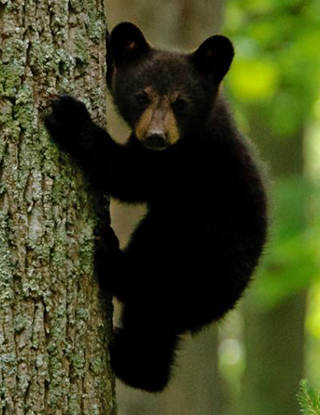As the largest wildlife species in the Sierra Nevada region, an adult Black Bear can be about 5 to 6 feet long and weigh 400 pounds or more.
They generally make their home in the mixed conifer forests and upper montane belts between 1,200 and 8,500 ft. elevation, in forest areas or thickets. When in need of shelter, they will inhabit caves, rock piles, or hollow trees.


What do black bear eat?
Black bears are highly flexible when it comes to their diet. They readily consume small mammals, insects, carrion, garbage, grasses, leaves, fruits, berries, and nuts. They are considered omnivores, just like humans.
In the fall, it becomes necessary for them to acquire a large amount of fat, which provides them with nourishment while they hibernate in the winter. Acorns are a dominant fall food.
Black bears are notorious for raiding food supplies and garbage cans near campgrounds, whereby they can become a serious problem. Many steps are currently being taken to ensure that bears don’t become accustomed to human food sources, so they don’t cause injury to themselves, to property, or to people.
How do black bear reproduce?
Summer is peak mating season for black bears, after which the females are pregnant for nearly 7 months. In mid- to late winter, females give birth to two or three tiny bear cubs. They emerge from the den with the mother bear in spring, when they are mature enough to forage. Cubs stay with the mother for around a year and a half on average.


